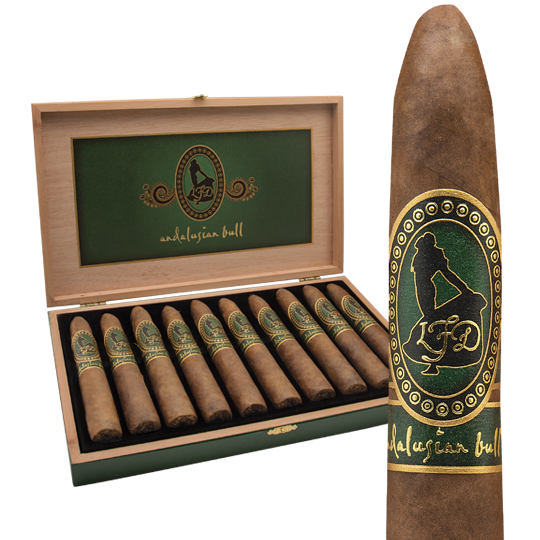How to Rehydrate Cigars: 8 Methods + Step-by-Step Guide
Cigars are more than just rolled tobacco; they offer a sensory experience for enthusiasts to savor. However, improper storage can dry out your cigars, compromising their flavor and quality. This guide explains why cigars dry out, how to recognize the signs, and eight step-by-step methods to rehydrate them. Whether you're a beginner or a seasoned aficionado, you’ll learn how to bring your cigars back to life.
Why Do Cigars Dry Out?
Humidity plays a critical role in preserving cigars. Proper storage ensures the tobacco retains its moisture, preventing dryness and brittleness. When humidity levels drop, cigars lose their natural moisture, which directly affects their flavor and integrity.
The Role of Humidity in Cigar Preservation
Humidity keeps cigars supple, enhancing their texture and flavor profile. The ideal range for cigar storage is 65%-72%. Below this threshold, the tobacco dries out, making the cigar less enjoyable and sometimes unsalvageable.
How Improper Storage Conditions Lead to Dryness
Cigars are highly sensitive to environmental changes. Storing them in non-humidified spaces, near direct sunlight, or in areas with fluctuating temperatures can strip them of moisture, leaving them cracked and brittle.
Signs of a Dry Cigar
Recognizing the signs of a dry cigar early can make the difference between salvaging it and having to discard it. Key indicators include:
- Cracking or splitting wrappers.
- Brittleness when handling the cigar.
- Lack of aroma or a faint, stale smell.
- The cigar burns too quickly or unevenly when lit.
Can You Rehydrate Any Cigar?
The good news is that many dried-out cigars can be rehydrated, but success depends on the extent of the damage. If a cigar is excessively brittle, with a cracked or disintegrating wrapper, it may not be salvageable. For those still intact, a slow and careful rehydration process is essential to restore moisture without causing further harm.
Why Slow Rehydration Matters
Rushing the rehydration process can lead to uneven swelling of the cigar’s wrapper, resulting in cracks or splits. A gradual approach allows the tobacco to absorb moisture uniformly, preserving its flavor, structure, and smokability. Patience is key to ensuring your cigars return to their original condition without compromising quality.
Tools You’ll Need for Rehydrating Cigars
To rehydrate cigars effectively, gather the following tools:
- Humidor: A dedicated storage space designed to maintain optimal humidity levels.
- Distilled Water: Necessary for humidification devices to avoid impurities that can damage cigars.
- Hygrometer: Measures the humidity levels, ensuring you stay within the ideal range.
- Humidification Packs (e.g., Boveda): Provide controlled humidity levels for rehydrating cigars safely.
- Airtight Bags or Containers: Create a sealed environment to retain moisture.
Optional Accessories for Best Results
For more precise control, consider advanced tools such as digital hygrometers or electronic humidifiers. These accessories can help monitor and maintain ideal conditions with greater accuracy, making the rehydration process smoother.
8 Methods to Rehydrate Cigars
Rehydrating cigars requires patience and the right technique to restore their moisture evenly without damaging their structure. Below are eight proven methods with step-by-step instructions to bring your cigars back to life.
1. Humidor Method (Preferred for Beginners)
The humidor method is the safest and most recommended approach, especially for beginners. By creating a stable and controlled environment, this method allows cigars to gradually regain moisture without risk of cracking or swelling.
Timeframe: 1-2 weeks.
Steps:
- Place the dried cigars in your humidor, leaving space between each cigar for airflow.
- Ensure the humidification device is filled with distilled water.
- Set the humidity level to 65%-70% using a hygrometer.
- Check the cigars daily, rotating them gently to ensure even rehydration.
- Once they feel supple and retain their aroma, they’re ready to smoke.
2. Humidification Packs
Humidification packs, such as Boveda packs, provide a consistent and precise level of humidity, making them a reliable choice for rehydrating cigars. This method is simple and minimizes the risk of over-humidifying.
Timeframe: Weeks to months.
Steps:
- Place the cigars in an airtight container or resealable plastic bag.
- Add a humidification pack (e.g., 69% Boveda pack) inside the container, ensuring it doesn’t touch the cigars directly.
- Seal the container or bag tightly to create a stable environment.
- Check the cigars weekly for signs of suppleness and aroma.
- Replace the pack if necessary until the cigars are fully hydrated.
3. Ziplock Bag Method
The ziplock bag method is an inexpensive option for those without a humidor or humidification packs. By combining a damp paper towel and a sealed bag, this method creates a temporary humidified environment.
Timeframe: 1-2 weeks.
Steps:
- Lightly dampen a paper towel with distilled water (avoid soaking it).
- Place the towel in a small, open container or fold it in a corner of the ziplock bag.
- Place the cigars in the bag, ensuring they do not touch the damp towel.
- Seal the bag tightly to trap the moisture inside.
- Check the cigars every few days, rotating them gently to ensure even rehydration.
4. Terracotta Humidifying Stone
A terracotta humidifying stone, often used for humidifying tobacco, can also be effective for cigars. The stone slowly releases moisture, making it a safe option for gradual rehydration.
Timeframe: 1-2 weeks.
Steps:
- Soak the terracotta stone in distilled water for 5-10 minutes.
- Place the stone in an airtight container with the cigars.
- Ensure the stone does not directly touch the cigars.
- Seal the container and leave it in a stable environment.
- Check progress weekly, refreshing the stone as needed until the cigars are rehydrated.
5. Damp Towel Method
The damp towel method is a simple yet effective option for rehydrating cigars. It uses a slightly moistened towel to create a humid environment, allowing the cigars to absorb moisture gradually.
Timeframe: 1-2 weeks.
Steps:
- Dampen a clean cloth or towel with distilled water. Ensure it is not dripping wet.
- Place the cigars in an airtight container, ensuring they don’t come into direct contact with the towel.
- Lay the damp towel at the bottom of the container or on a raised surface above the cigars.
- Seal the container tightly to trap the humidity.
- Check the cigars every few days and refresh the towel if needed.
6. Hot Shower Method
This quick-fix method uses the steam from a hot shower to create a temporary humidified environment. While effective for minor dryness, it is not recommended for extremely dry cigars due to the potential risk of over-humidification.
Timeframe: 1-2 days (for minor dryness)
Steps:
- Place the cigars in an airtight container or ziplock bag.
- Run a hot shower for 10-15 minutes to fill the bathroom with steam.
- After turning off the shower, leave the cigars in the humidified bathroom (still sealed in their container) for a few hours.
- Repeat the process for 1-2 days, checking the cigars periodically.
- Transfer the cigars to a humidor for long-term storage once they feel supple.
7. Bread or Potato Slice Method
Using a slice of bread or potato can introduce temporary moisture into a sealed environment. While this method is not ideal due to potential contamination, it can work in emergencies when no other options are available.
Timeframe: 1 to 3 days for mild rehydration
Steps:
- Place the cigars in an airtight bag or container.
- Add a fresh slice of bread or potato to the bag, ensuring it does not touch the cigars.
- Seal the bag tightly and leave it in a stable environment.
- Check the cigars every few hours to ensure they don’t over-humidify.
- Remove the bread or potato once the cigars regain moisture and transfer them to a humidor.
8. Refrigerator Method
While unconventional, the refrigerator method can work by creating a controlled low-humidity environment. This method is best for cigars with mild dryness.
Timeframe: 1-2 weeks.
Steps:
- Place the cigars in an airtight container with a small damp sponge or humidification pack.
- Store the container in the refrigerator’s crisper drawer, which has higher humidity levels than the rest of the fridge.
- Check the cigars weekly, rotating them gently.
- Once the cigars feel rehydrated, transfer them to a humidor for maintenance.
Common Mistakes to Avoid
Rehydrating cigars requires care and precision. Avoid these common pitfalls to ensure success:
Rehydrating Too Quickly
Introducing excessive moisture too fast can cause the wrapper to swell unevenly, leading to cracks or splits. Always opt for a gradual process, allowing the tobacco to regain moisture evenly.
Ignoring Hygrometer Readings
Humidity levels can fluctuate during rehydration. Regularly check your hygrometer to keep the environment stable and avoid over-humidifying.
Using Tap Water
Never use tap water in your humidification devices. The minerals and impurities can damage cigars and even promote mold growth. Always use distilled water.
How Long Does It Take to Rehydrate a Cigar?
The time required to rehydrate a cigar depends on its size and the extent of dryness.
- Short cigars: Typically rehydrate in about 1 week.
- Long cigars: May take up to 2 weeks.
- Very dry cigars: Severe dryness might require 3-4 weeks for full restoration.
Signs of Rehydration Progress
Monitoring your cigars during the rehydration process ensures they regain moisture without over-humidifying. Here’s what you can expect at different stages:
|
Time Frame |
Observable Signs |
What to Do |
|
First 2-3 Days |
- Wrappers feel slightly less brittle. - A faint aroma begins to return. |
Ensure humidity levels remain stable. Avoid over-handling the cigars at this stage. |
|
1 Week |
- Cigars feel slightly more pliable when squeezed gently. - Wrappers look smoother with less cracking. |
Rotate cigars to ensure even moisture absorption. Monitor the hygrometer regularly. |
|
2 Weeks |
- Tobacco feels fully hydrated. - Aroma becomes richer and more pronounced. |
Confirm consistent humidity and test flexibility gently. Prepare for transfer to long-term storage. |
|
3-4 Weeks (if necessary) |
- Complete suppleness with no remaining brittleness. - Even coloration across the wrapper. |
For very dry cigars, allow extra time but continue with gradual rehydration methods. |
Signs of a Successfully Rehydrated Cigar
When your cigars are fully rehydrated, several clear indicators will confirm their readiness. Pay attention to these signs to ensure the process was successful:
Supple Wrapper
A rehydrated cigar will have a smooth and flexible wrapper. It should no longer feel dry or brittle, and there should be no visible cracks or splits. This suppleness indicates that the wrapper has regained the moisture it needs to maintain its integrity.
Consistent Aroma
One of the easiest ways to tell if a cigar is rehydrated is by its aroma. A properly restored cigar will have a rich, earthy scent, characteristic of fresh tobacco. If the aroma remains faint or stale, the cigar may need additional time to absorb moisture.
Pliable Structure
When you gently squeeze a rehydrated cigar, it should feel firm but slightly springy. This balance between firmness and flexibility shows that the tobacco inside has absorbed moisture evenly. Brittle or overly soft cigars suggest incomplete or uneven rehydration.
Even Color
Check the wrapper for consistent coloration. A successfully rehydrated cigar will have an even hue without dry, pale, or discolored spots. Uneven coloration may indicate that parts of the cigar have not absorbed enough moisture or that the process was rushed.
Slow, Even Burn
Once rehydrated, the cigar should burn evenly when lit. An even burn with a consistent pace confirms that the tobacco has regained its optimal moisture content. Fluctuations in burn rate or splitting during smoking may suggest incomplete restoration.
How To Prevent Cigars from Drying Out in the Future
To avoid the need for rehydration in the future, proper storage is key. Follow these tips to maintain your cigars in peak condition:
Invest in a Quality Humidor
A reliable humidor is the most important tool for cigar preservation. Look for a model with a tight seal and high-quality materials to maintain consistent humidity. Regularly season your humidor to prevent the wood from absorbing moisture, ensuring it protects your cigars effectively.
Use Effective Humidification Devices
To maintain the right humidity levels, equip your humidor with appropriate humidification tools. Options include:
- Boveda Packs: Provide precise humidity control with minimal maintenance.
- Humidity Beads: Absorb or release moisture as needed to stabilize conditions.
- Electronic Humidifiers: Ideal for larger humidors, offering automatic adjustments for consistent performance.
Monitor Humidity Regularly
Use a hygrometer to measure humidity levels in your humidor, aiming for the ideal range of 65%-72%. Check the hygrometer weekly, and recalibrate it periodically to ensure accuracy. Address any deviations in humidity promptly to avoid dryness or over-humidification.
Keep Cigars Away from Extreme Conditions
Environmental factors play a significant role in cigar preservation. Place your humidor in a stable environment, away from direct sunlight, heat sources, and areas with excessive airflow. Sudden changes in temperature or humidity can destabilize the delicate balance required to maintain your cigars.
Where Can You Buy a Humidor?
A quality humidor is essential for preserving the freshness, flavor, and longevity of your cigars, and TRP Cigars offers an exceptional range to suit every need. Whether you’re looking for a compact travel humidor or a premium desktop model, TRP Cigars provides expertly crafted options that combine functionality with style. Each humidor is designed to maintain optimal humidity levels, ensuring your cigars remain in perfect condition.
Conclusion
Proper storage and care are essential to preserving the quality of your cigars, but if they dry out, rehydration can often restore them. By using the right tools and following gradual methods, you can revive your cigars without compromising their flavor or structure. Look for signs like a supple wrapper, rich aroma, and even burn to confirm success.
To prevent dryness in the future, invest in a quality humidor, monitor humidity regularly, and maintain stable conditions for your cigars.


